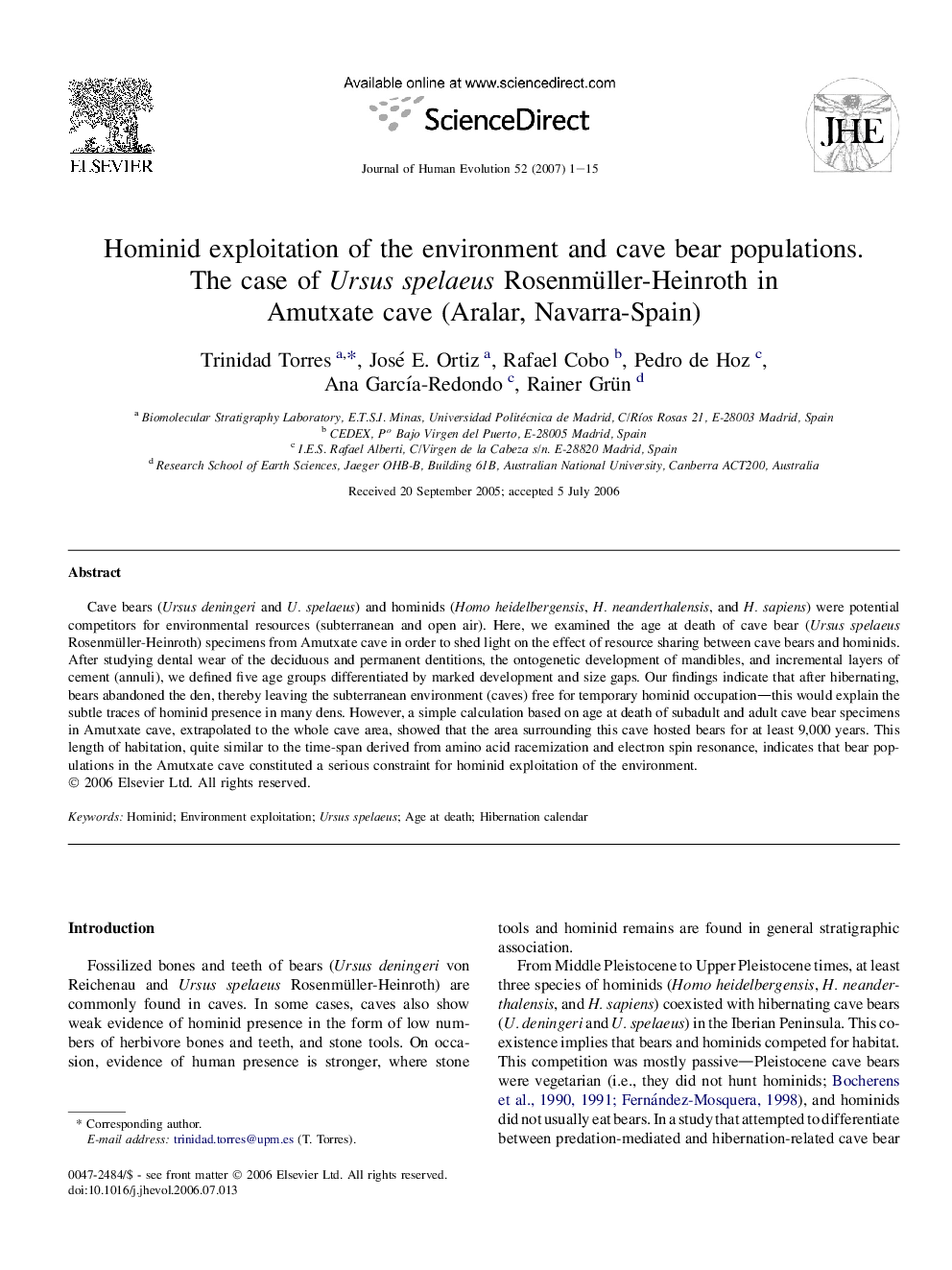| Article ID | Journal | Published Year | Pages | File Type |
|---|---|---|---|---|
| 4557424 | Journal of Human Evolution | 2007 | 15 Pages |
Cave bears (Ursus deningeri and U. spelaeus) and hominids (Homo heidelbergensis, H. neanderthalensis, and H. sapiens) were potential competitors for environmental resources (subterranean and open air). Here, we examined the age at death of cave bear (Ursus spelaeus Rosenmüller-Heinroth) specimens from Amutxate cave in order to shed light on the effect of resource sharing between cave bears and hominids. After studying dental wear of the deciduous and permanent dentitions, the ontogenetic development of mandibles, and incremental layers of cement (annuli), we defined five age groups differentiated by marked development and size gaps. Our findings indicate that after hibernating, bears abandoned the den, thereby leaving the subterranean environment (caves) free for temporary hominid occupation—this would explain the subtle traces of hominid presence in many dens. However, a simple calculation based on age at death of subadult and adult cave bear specimens in Amutxate cave, extrapolated to the whole cave area, showed that the area surrounding this cave hosted bears for at least 9,000 years. This length of habitation, quite similar to the time-span derived from amino acid racemization and electron spin resonance, indicates that bear populations in the Amutxate cave constituted a serious constraint for hominid exploitation of the environment.
